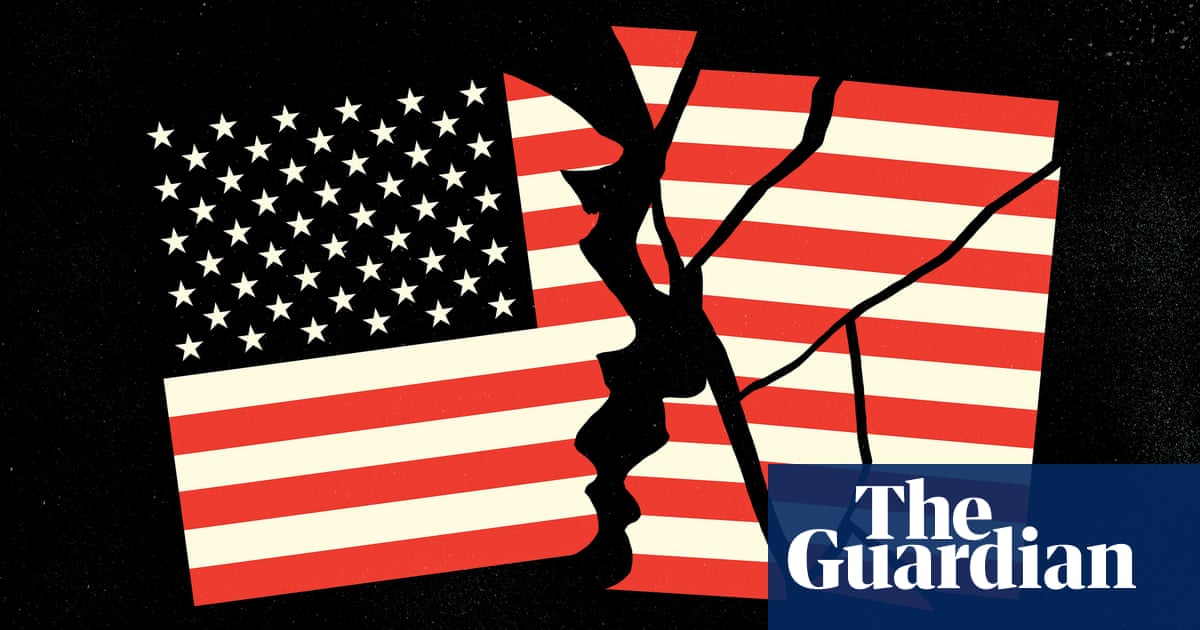
Will Trump’s ‘Liberation Day’ be the start of a trade war – or another climbdown?
Donald Trump won back the White House with a promise to transform the US economy. Millions of Americans, struggling with higher prices and bigger bills, elected a president who pledged to revive his country’s industrial heartlands – and leave the rest of the world to pick up the bill.
On Wednesday – a day dubbed Liberation Day by the president and his aides – Trump has vowed to pull the trigger and impose an historic barrage of tariffs on goods from overseas he claims will fund an extraordinary revival.
Ten weeks after obtaining power, Trump has said he will raise tariffs on all products from countries that charge tariffs on US exports; hit goods from Canada and Mexico with sweeping duties; introduce steep tariffs on foreign cars, computer chips and drugs; and target countries importing oil from Venezuela with duties on their US exports.
This is “the big one”, according to the president. Business leaders and economists are certainly worried about the scale of his trade strategy, which the Tax Foundation already estimates could knock US gross domestic product (GDP) by roughly 0.7% and cost about 500,000 US jobs.
“The escalating tariffs are a body blow to the global trading system,” said Eswar Prasad, professor of trade policy at Cornell University, and a former official at the International Monetary Fund.
Wherever you stand, a move on this scale would constitute a radical shake-up – and set the stage for a fundamental overhaul of the US economy. And yet, even as he ramped up the rhetoric, Trump has appeared to tread carefully.
“I will immediately begin the overhaul of our trade system to protect American workers and families,” the president declared at his inauguration in January. “Instead of taxing our citizens to enrich other countries, we will tariff and tax foreign countries to enrich our citizens.”
While the threats were immediate, the action was not.
Take Canada and Mexico. The administration has adopted a strikingly hardline stance against the US’s largest and nearest trading partners, but its imposition of blanket tariffs has been hit by a dizzying array of shifting deadlines, delays and reversals.
An initial pledge to impose tariffs from “day one” shifted, without explanation, to February. When February rolled around, a last-ditch deal kicked the can to March. When the tariffs were finally imposed, it was a little over 24 hours before carmakers were granted a temporary exemption, and 48 hours before all goods covered by an existing trade deal between the US, Mexico and Canada were spared for another month.
All the while, Trump and his most senior officials have slowly, but surely, accepted the risks they are raising in pursuit of the rewards they have vowed to obtain.
“Tariffs don’t cause inflation,” the president claimed in January. OK, prices “could go up somewhat short term”, he conceded in February. “There’ll be a little disturbance,” he added in March, stressing that he was alright with that.
The US treasury secretary, Scott Bessent, acknowledged earlier this month that there may well be a “one-time price adjustment” as a result of Trump’s tariffs. “Access to cheap goods is not the essence of the American dream,” he argued.
While Trump predicts that slapping high US tariffs on foreign goods will prompt an influx of international companies to make products inside the US, rather than out, companies and investors worldwide are already struggling to keep up with his administration’s erratic trade policymaking.
So far, since his return to office, Trump has hiked tariffs on Chinese exports to the US and raised tariffs on foreign steel and aluminium to 25%.
The average US tariff rate has already shot up from 2.5% to 8.4% this year, the highest level since 1946, according to the Tax Foundation.
Alex Durante, its senior economist, said the country is “inching towards” the kind of tariffs last seen since the 1930s, when the Smoot-Hawley bill, among the most decried pieces of legislation in US history, introduced tariffs on thousands of goods.
“With each tariff action we’re rapidly approaching a universal tariff that would be damaging to the economy,” said Durante. “Behind the scenes, I think there is probably some concern, even among some of [Trump’s] staff, that they’re rapidly approaching the point of no return.”
As his administration grappled with the fallout from the inadvertent inclusion of a journalist in a group chat about secret military plans last week, the president summoned reporters to the Oval Office to pre-announce tariffs on foreign cars. “This is very exciting,” he told them.
The excitement is far from universal. Prasad, at Cornell, said: “We are shifting to a world where a commonly accepted set of rules is being displaced by unilateral actions that ostensibly promote a fair trading system, but will instead create volatility and uncertainty, inhibiting the free flow of goods and financial capital across national borders.”
The car tariffs would be “a hurricane-like headwind to foreign (and many US) automakers”, said Dan Ives, an analyst at Wedbush Securities, who suggested they would push up prices by as much as $10,000 in the US. “We continue to believe this is some form of negotiation and these tariffs could change by the week,” he added, “although this initial 25% tariff on autos from outside the US is almost an untenable head-scratching number for the US consumer”.
Such action is also widely expected to prompt retaliation – with US exporters in the firing line.
While a spokesperson for the European Commission stressed it was too early to detail the European Union’s response to actions “still not implemented” by the US, they added: “I can assure you that it will be timely, that it will be robust, that it will be well calibrated and that it will achieve the intended impact.”
Trump is watching closely. As countries and markets hit by new US tariffs consider how to hit back, the president publicly warned the EU and Canada that he would hit them with “far larger” duties if they worked together on their response.
Some doubt whether the federal government has enough capacity to execute the trade onslaught which Trump has said is coming. “I simply just don’t think that [the US Trade Representative] right now has enough staff to even figure out how to implement some of these tariffs,” said Durante.
But after myriad false starts and much fluctuation, the lingering question – despite all the shots, warnings and vows – is not how far Trump can take his trade wars, but how far he will.
The president is, at heart, a salesman. In business, he sold real estate – with mixed success. In television, and then politics, he sold stories – with extreme success.
Millions of Americans bought the image he constructed on The Apprentice of himself as a phenomenally successful entrepreneur. Millions more bought his promise on the campaign trail to share this phenomenal success with the rest of the nation.
Trump is no longer selling a promise, but his strategy to deliver it. He won the White House twice by using stories, sometimes unbound by truth, to bend perceptions, break norms and build support. But rhetoric – however bold, and brash – can’t change reality.
The president says unleashing a wave of tariffs, and triggering an abrupt surge in costs in the US and across the world, would cause just a “little disturbance”.
Should Wednesday’s action prove as drastic as billed, businesses and consumers may struggle to reconcile this description with what they encounter.
Liberation Day is the moniker coined by this administration. Liability Day might prove more apt.










